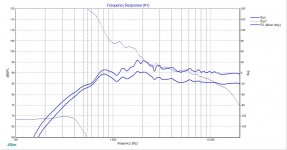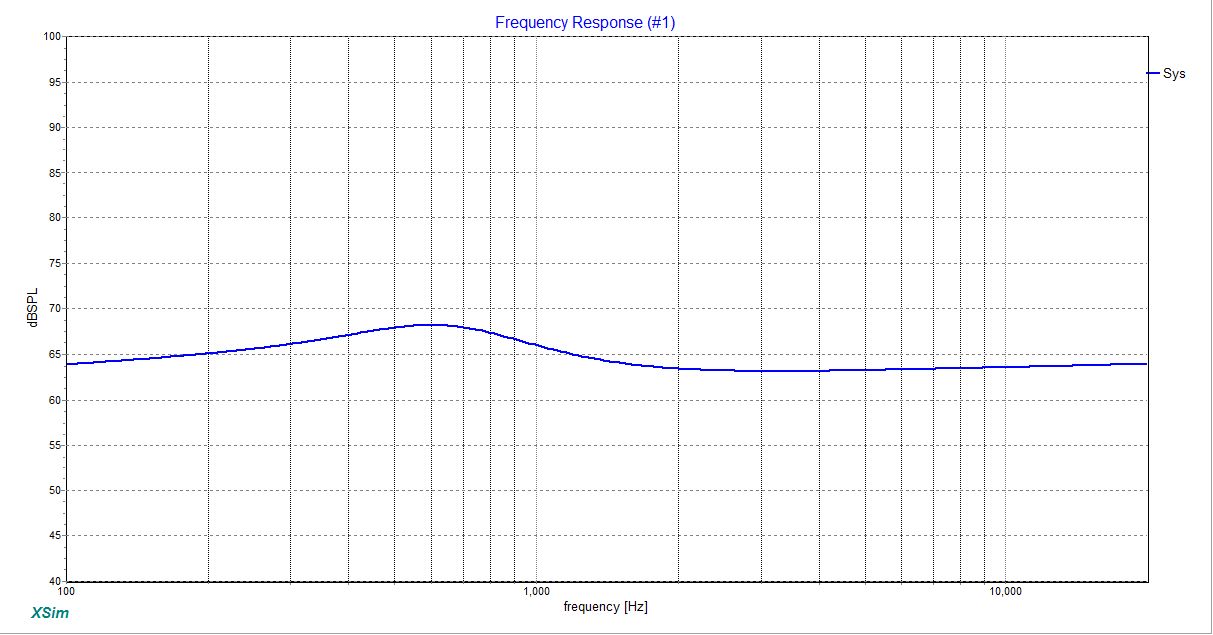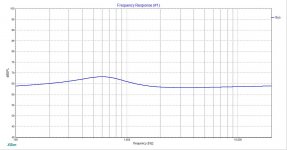Fixed Value Ceramic Resistor in Series on the Live Feed to Your Speakers
- #1
Some time ago I changed my 3 way speaker system from passive to 3 way active. The bass and mid units are 8ohm whereas the tweeter is 4ohm. I'm not sure that the amplifier driving the tweeter is really happy driving the 4ohm load.
In theory adding a 4ohm resistor in series with the tweeter should increase the impedance seen by the amp to about 8ohms. I know that the resistor would share the amp output with the speaker and reduce the speaker output by about 3db. However there seem to be many urban myths which indicate that this is not so simple. See below for one I found.
It also occurs to me that a suitable resistor would have to be power resistor (wire wound) which would add some inductance and capacitance (probably very small) to the circuit.
So, would adding such a resistor to a tweeter in an active system create major problems?
http://www.diyaudio.com/forums/multi-way/295634-can-impedance-driver-altered-adding-resistor.html
If you put a resistor in series with a speaker, it will change the speaker's response based on the speaker's impedance curve. This will make the speaker sound different. The resistor forms a voltage divider with the speaker - part of the voltage from the amp will be dropped across the resistor and part across the speaker. If the speaker's impedance curve is not flat (most are not), then the voltage dropped across the speaker will be different at different frequencies. In simple terms this is the same way an equalizer works - changes the voltage to the speaker at different frequencies.
I'd suggest not using the resistor and instead not turning up the amp as much. 6dB should do it.
Last edited:
- #3
So, would adding such a resistor to a tweeter in an active system create major problems?
The issue with driving 4 ohm drivers is the current draw. You could limit the amp output and, therefore, current by using a voltage divider before the amp. I am assuming the tweeter dB output is a lot higher than the other drivers, of course.
Another option would be to but a cheap Class D amp suited to 4 ohm.
Last edited:
- #9
If you put a resistor in series with a speaker, it will change the speaker's response based on the speaker's impedance curve. This will make the speaker sound different. The resistor forms a voltage divider with the speaker - part of the voltage from the amp will be dropped across the resistor and part across the speaker. If the speaker's impedance curve is not flat (most are not), then the voltage dropped across the speaker will be different at different frequencies. In simple terms this is the same way an equalizer works - changes the voltage to the speaker at different frequencies.
As Patrick Bateman pointed out: this is not an urban legend, this is how passive crossovers work. If you'd use a resistor in series with the tweeter, you'd have to be mindful how it alters the frequency response of the system. Also if the tweeter's impedance on average is 4 ohms and you add a 4 ohm resistor in series with it, the tweeter and the resistor are drawing equal amount of power on average. In everyday home listening this will hardly be any kind of problem, but if you're going to feed the tweeter, say, 30 watts (counting the lower sensitivity caused by the resistor), you'll need a resistor that's able to hold 30 watts as well.
Last edited:
![]()
- #14
This effect depends very much on the tweeter, however, the principle is correct. You cannot add a resistor to most tweeters and expect it to always be frequency neutral. Some AMT's are almost ideal resistors while ribbons like Raal are very inductive and therefore funky as hell.
Here is a typical tweeter, the XT25BG (as measured by yours truly), with and without a 2.7 Ohm Resistor. As you can see, at 10-20kHz this is about a 5 dB pad, but down at 1 kHz only a 3 dB pad, so the resistor introduces a new, 2 dB downwards slope relative to the original tweeter response:
-

XT25Imp_Resistor.jpg
119.6 KB · Views: 1,244
Last edited:
![]()
- #16
Here is an easier to see view. This uses the same impedance file, but we assume a speaker with ideal bandwidth and flat 70 dB sensitivity. I have also increased the series resistor to 4 Ohms.
At the top octaves, this behaves like a 6 dB pad, but at the impedance peak, it is only about a 1-2 dB pad:

Is this a HUGE deal if you are hacking around a pair of cheap speakers? Meh, probably not, but if I am making them for myself I would take this into account, or let XSim do it for me.
I should also point out this effect is entirely in the electrical domain. So if you wanted to use Room EQ Wizard to measure the driver impedance, that's all you need. Grab it, and stick it into XSim to see what your risks are.
Best,
E
-

Differences.jpg
105.8 KB · Views: 828
Last edited:
Source: https://www.diyaudio.com/community/threads/adding-resistor-in-series-with-tweeter-in-active-sytem.309804/
0 Response to "Fixed Value Ceramic Resistor in Series on the Live Feed to Your Speakers"
Post a Comment